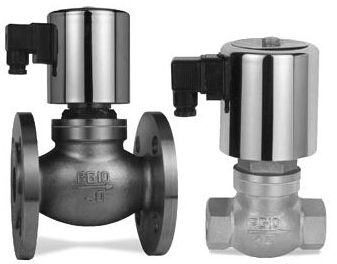As one of the actuators of the fluid control automation system, the solenoid valve has become the first choice for fluid control automation because of its low cost, simplicity, fast action, easy installation and easy maintenance. In the 1950s and 1980s, China's solenoid valves have always relied on imports. Until the 1990s, domestic solenoid valves occupied a certain market share. In industrial processes, the role of valves is mainly to control the flow and flow of various fluids: such as water, oil, chemical liquids, etc., based on parameters such as temperature, pressure and flow. The control valves that are often used in factories include pressure reducing valves, pneumatic fixed temperature valves, solenoid valve temperature control systems, proportional control valve temperature control systems, and temperature control valves. In the traditional industry, the commonly used valves include manual valves and pneumatic valves. However, in terms of operating efficiency and energy saving, ordinary valves are inferior to electric valves in terms of installation cost and efficiency. Electric control valves have become an indispensable part of the industry. Due to its energy-efficient advantages, solenoid valves have gradually occupied the market.

In recent years, China's electromagnetic valve industry has developed rapidly. Thanks to the continuous improvement of the production technology of the solenoid valve industry and the continuous expansion of the downstream demand market, the development of the solenoid valve industry in the domestic and international markets is very promising. There are about 6,000 valve companies in China, of which 900 have an annual output value of more than 5 million yuan. There are 3 domestically listed valve companies, namely China Nuclear Technology, Hongcheng, and Guangdong Pearl. The annual demand for the Chinese valve market is no less than 10 billion yuan. Among them, the annual demand for the solenoid valve market is about 3 billion yuan. According to the scientific concept of development, China will inevitably put infrastructure construction, such as water, electricity, gas and heat, in order to ensure the coordinated development of the future economy and improve people's lives. The weight, this is precisely the use of the valve. As a new valve type that is still new and not replaced, the potential and explosiveness of its solenoid valve demand will be staggering.
According to the "China Solenoid Valve Industry Status Survey and Future Prospects Trend Report (2015)" released by China Industrial Research Network, with the progress and development of science and technology, the speed of social and economic development continues to increase, and competition in various industries is becoming increasingly fierce. After decades of development, China's valve industry has made great progress in product development, performance, quality, reliability and service. The industry is developing in the direction of high automation, intelligence, versatility, high efficiency and low consumption, and has become a must for many industrial production processes. During the “Eleventh Five-Year Plan†period, the total number of valves required for large and medium-sized coal-fired power plants in the “Eleventh Five-Year Plan†period was: total valve demand of 153,000 tons, annual average demand of 30,600 tons; total valve demand of 3.96 billion yuan, annual average The demand is 792 million yuan. According to the annual growth rate of 20%, the total demand for valves during the “Twelfth Five-Year Plan†period is 265,600 tons, the average annual demand is 53,200 tons, the total valve demand is 6.64 billion yuan, and the average annual demand is 13.28. 100 million yuan.
Competition within the solenoid valve industry. The reasons for the intensified competition within the industry may be as follows: First, the industry is growing slowly, and the competition for market share is fierce; second, the number of competitors is large, and the amount of competitiveness is quite equal; third, the products or services provided by competitors are roughly The same, or only less obvious differences; Fourth, some enterprises for the benefit of economies of scale, expand production scale, the market balance is broken, a large number of products, companies began to resort to price-price competition.